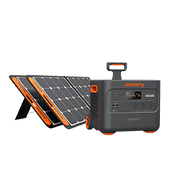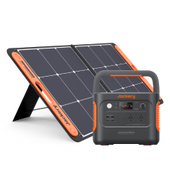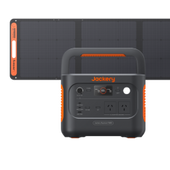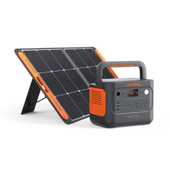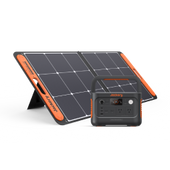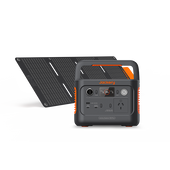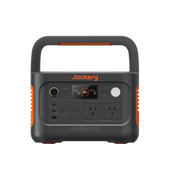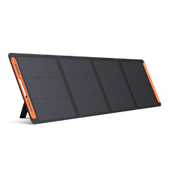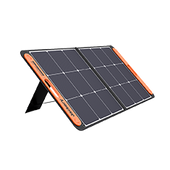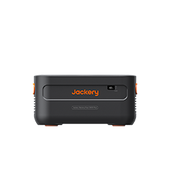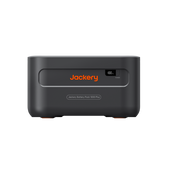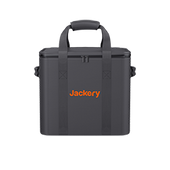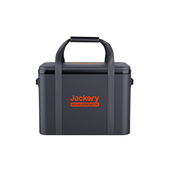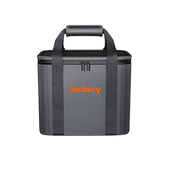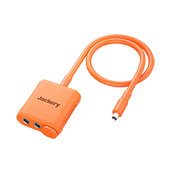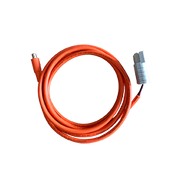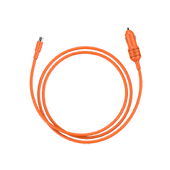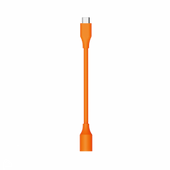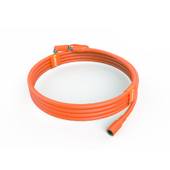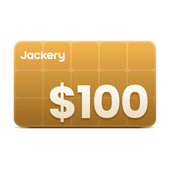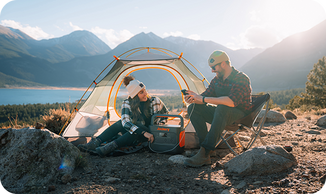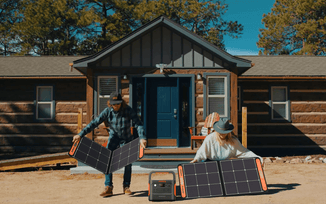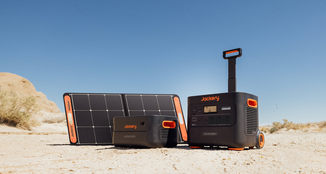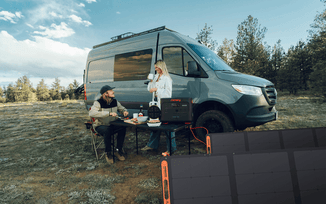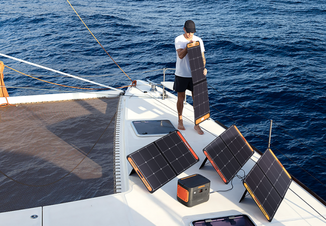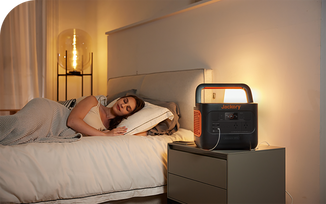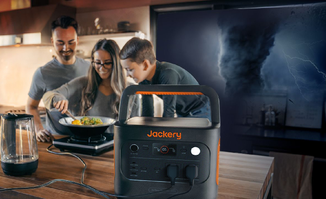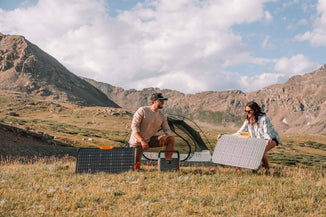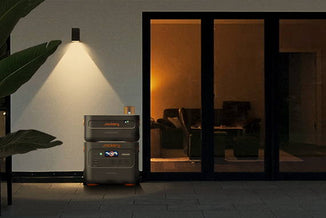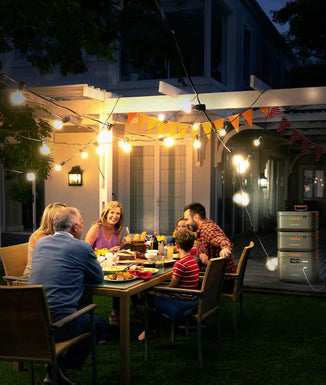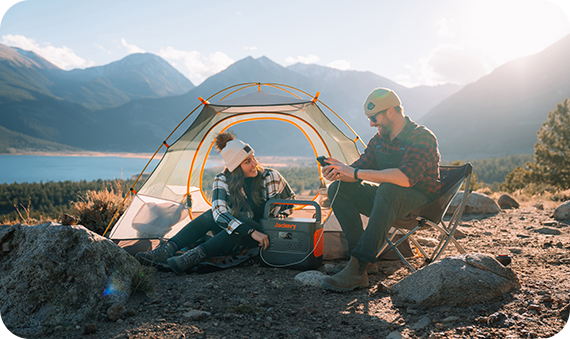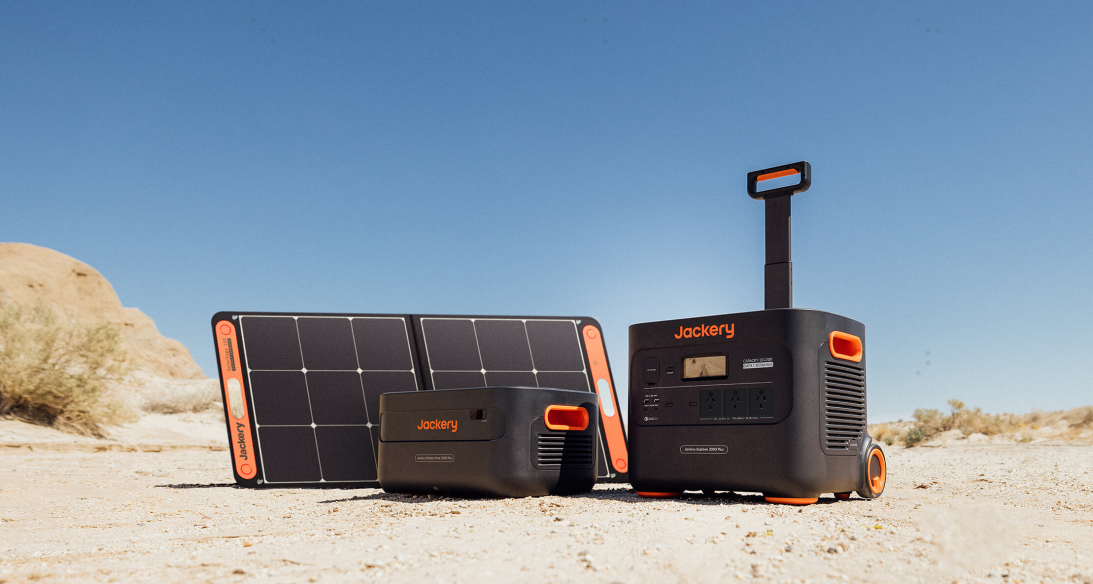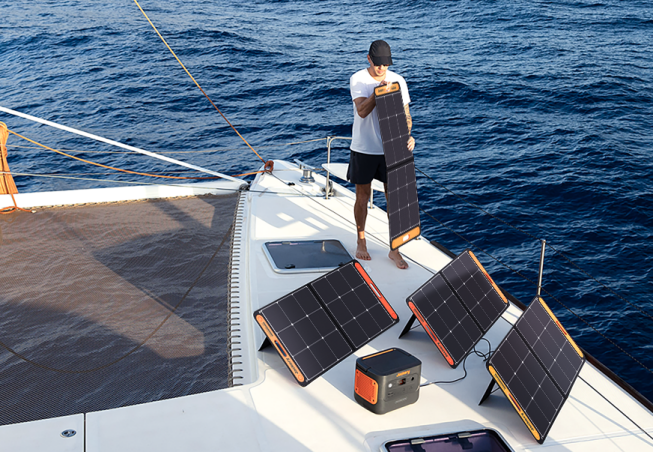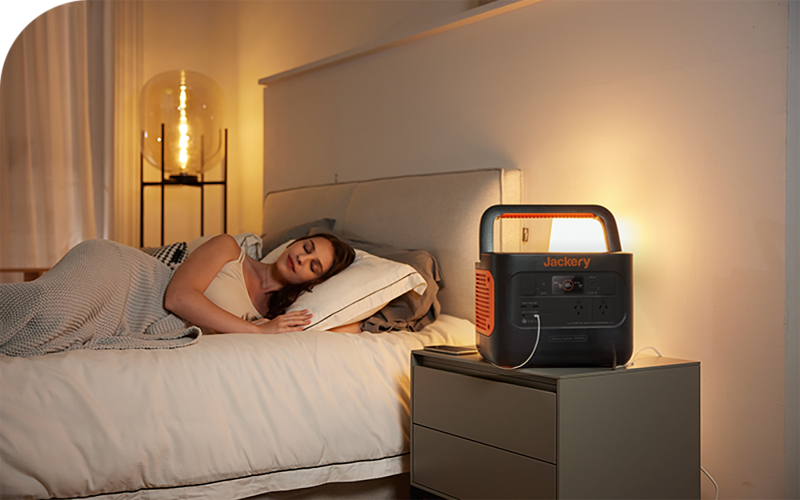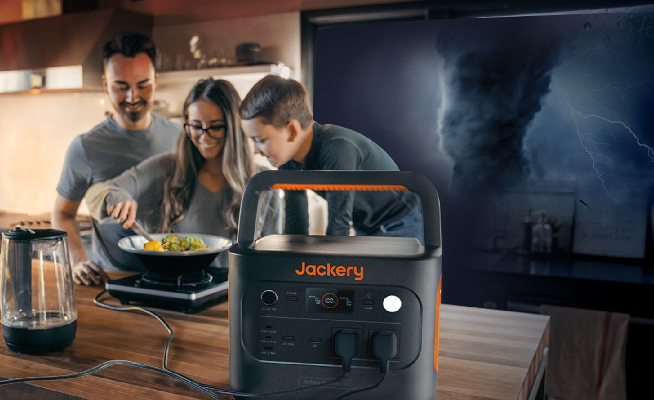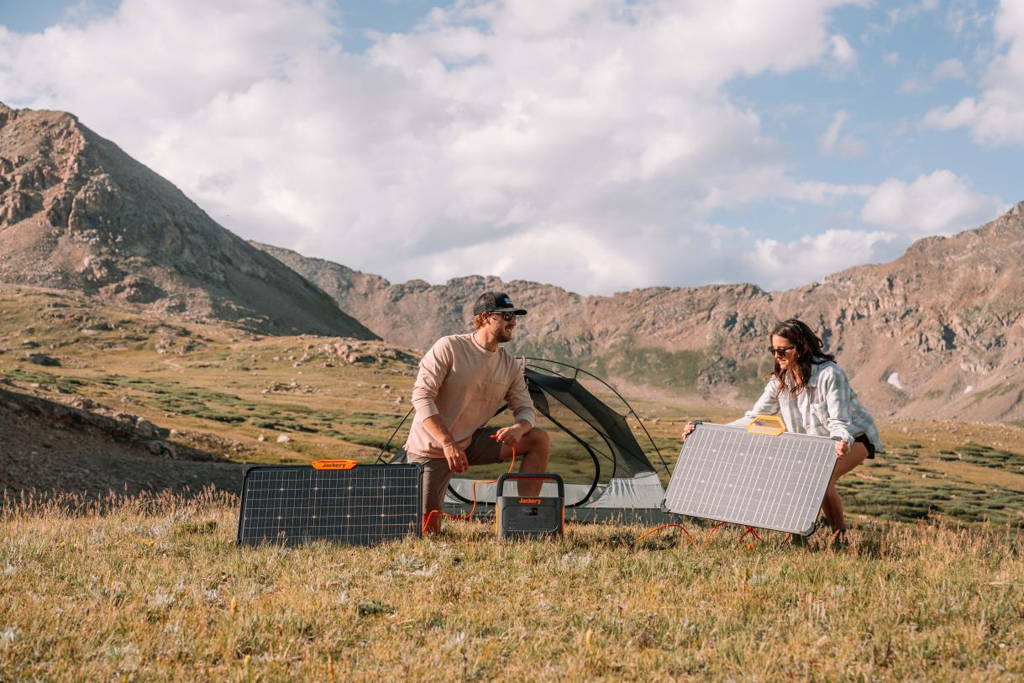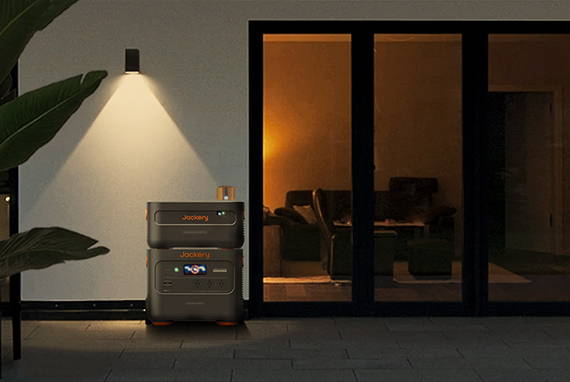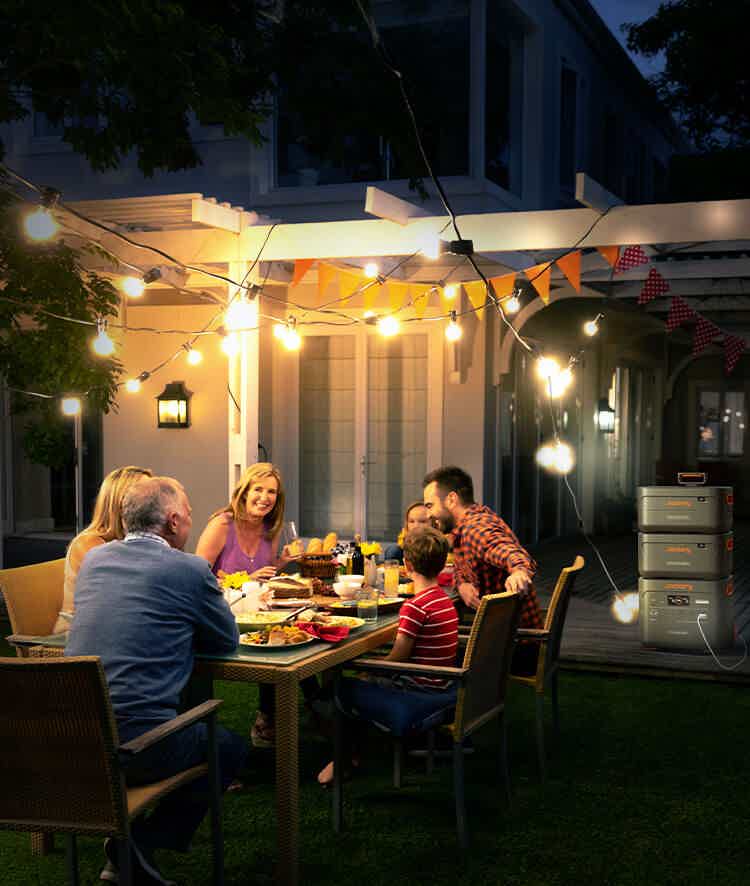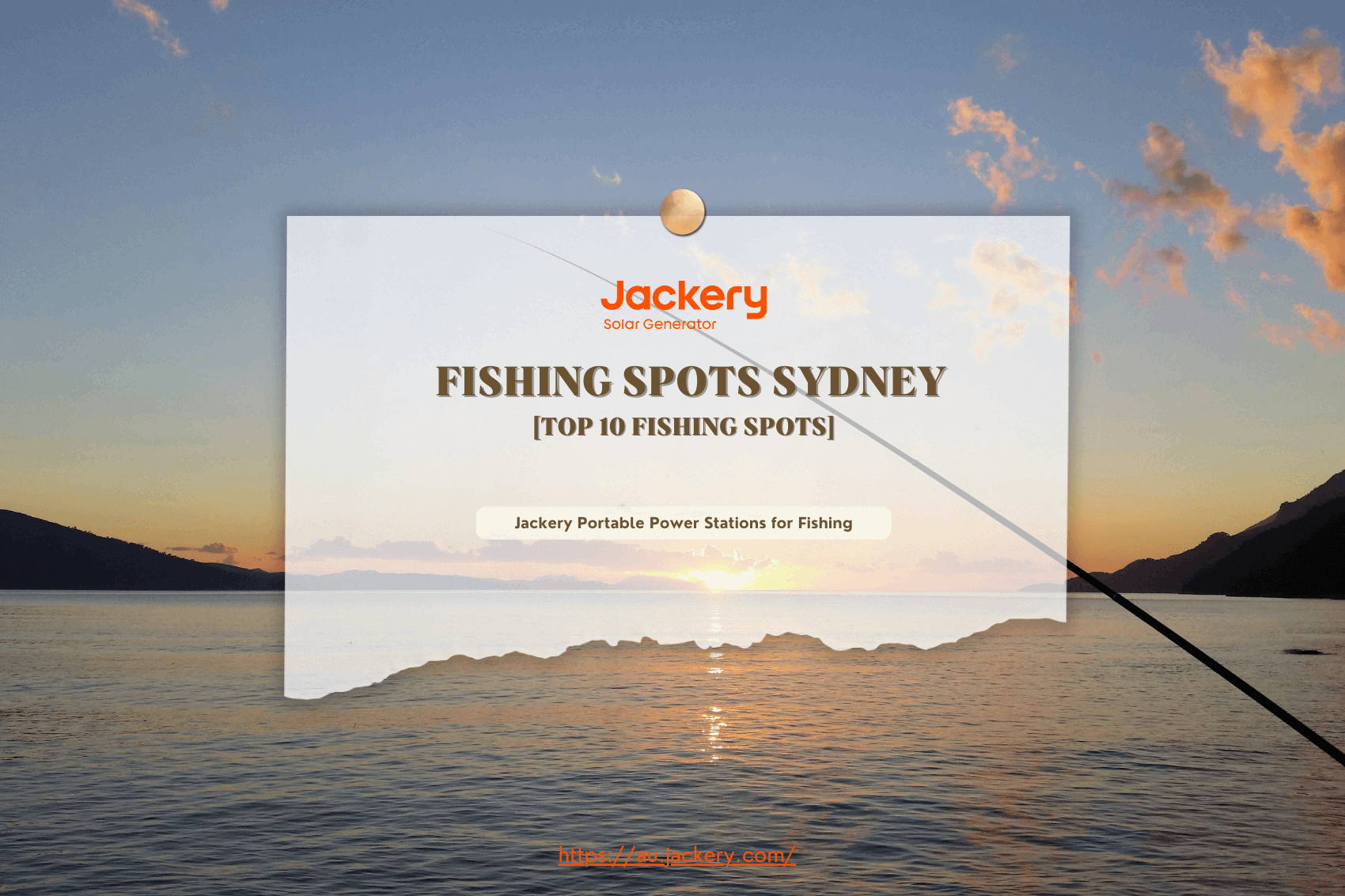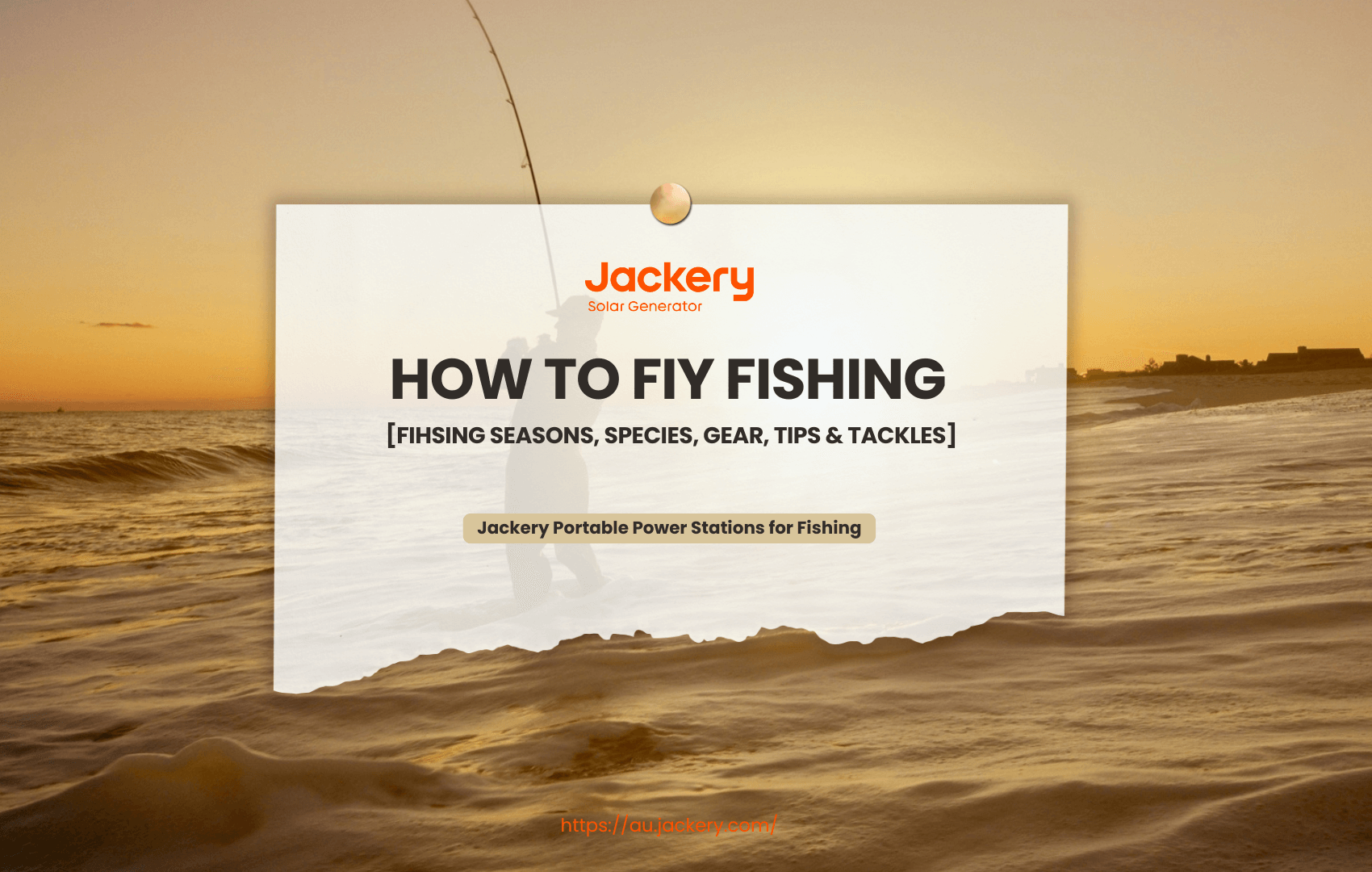|
Key Takeaways: |
|
- Australia boasts numerous surf places suitable for all skill levels. Australia's unique and stunning coastline has earned it a world-class surfing reputation. - Surfing in Australia is year-round, with variable seasons across regions. - Maintaining safety and understanding local norms are essential for a positive surfing experience. - Australia has a broad range of surf breaks, but understanding local etiquette and being safe is essential for a wonderful experience. - We recommend Jackery Explorer 300 Plus and 600 Plus for your surfing trips to ensure you are always powered. |
Why You Should Go Surfing in Australia?
Australia has gained global recognition for its breathtaking coasts and iconic surf breaks. Australia has a surfing culture that is difficult to emulate. With over 50,000 kilometres of coastline connected by over 10,000 beaches, there is a wave for every level of surfer. Whether you want to carve up the waves at Bondi Beach or learn to surf on a laid-back longboard in Noosa, there is a wave for everyone.
Furthermore, surfing in Australia is more than a sport or one of the finest free things to do in Australia (provided you have your board!); it is a way of life that values outdoor adventure, well-being, and community.
With more than 85% of Australia's population living within 50 kilometres of the coast, the country has a strong surf culture, with local shapers, annual surf competitions, and a bustling scene of cafes and businesses celebrating the surf lifestyle. Furthermore, the range of waves—from massive reef breaks to moderate beach waves—ensures that every surfer, novice or experienced, finds their ideal surf spot.
When to Go Surfing in Australia?
Surfing in Australia takes place all year. There is so much swell here that you will be able to catch something regardless of when you visit.
However, the finest quality waves of the year occur during the winter and fall months, when low-pressure systems shower the Tasman Sea and the Southern Ocean, creating conditions powerful enough to reach beyond the continental reefs surrounding Perth and WA. Here's a more detailed seasonal guide to surfing in Australia and what to wear when you go.

Summer (December–March)
Smaller swells arrive in all parts of Australia as soon as summer begins. The beaches are hot (very hot), the water is warm (rashies are recommended in most areas, but some will wear 2mm or 3/2 for extended periods), and it is somewhat busy. However, whether you get a SW swell in Western Australia or a bit of SE on the East Coast, it may be a fantastic time to surf, with glassy conditions and little breezes.
Autumn (April–May)
Surfing in Australia is fantastic in the autumn. The larger winter swells are only beginning to function in Queensland and New South Wales, whilst WA is significantly less windy. For gnarlier waves, head south to Adelaide and Tasmania, where the water grows colder but bigger faster. Pack the 3/2 and consider booties as you head south.
Winter (June–August)
Winter significantly increases the quality of swells across all of Australia's major surfing regions. In the east, the wind dies down, and SW conditions arrive, assisting in the ignition of the Margaret River breaks and up the Perth coast. Because of the same swell systems, South Australia can be significant, whilst Tasmania's slabby monsters will be at full power.
In New South Wales and Queensland, all of this is matched by predictable low-pressure storms in the Tasman Sea, which bring head-on easterly and southeast swells to the Sydney region and beyond. In most cases, a 3/2 is sufficient, although Tasmania and South Australia will require something thicker.
Spring (September–October)
Spring is the worst time of year on the east coast. That doesn't imply it's horrible; remember, this is Oz. It's only that the swells have dropped noticeably, and you may still find onshores from winter storms but without the waves to match. It can be untidy and a waiting game, but it is still acceptable. Onshore winds also affect the west coast of Western Australia and Perth, and you may need to drive outside the city to catch something (such as to Margaret River). 3/2s are the norm.
Best 10 Surfing Spots in Australia
Australia is a surfer's paradise, with world-class waves, breathtaking landscapes, and a thriving sandy-haired culture. In this part, we look at Australia's top ten surfing destinations that every surfer, whether new or experienced, should visit. Each location has distinct characteristics, ranging from famous waves and historical significance to spectacular natural beauty.

1. Bondi Beach, NSW
Location: New South Wales, Australia, 20 minutes east of Sydney's central business district.
Transportation: Various paid parking lots near the beach may accommodate vehicles.
Swells: It best picks up swells from the south (S) and southeast (SE).
Bondi Beach is a symbol of Australia's surfing culture. Bondi Beach, known for its consistent waves and colourful coastal ambience, is a popular destination for local and international surfers. Predominantly beach breaks offering both left and right-handers. Reef breaks can be found near the headlands.
Bondi generally has dependable surf year-round, often having waves when other Sydney beaches are flat due to its southeast-facing exposure to swells. It best picks up swells from the south (S) and southeast (SE). North-easterly (NE) swells can also produce good conditions, particularly at the northern end.
2. Byron Bay, NSW
Location: New South Wales, Australia.
Transportation: Drive south on the M1 from Brisbane for approximately two hours.
Car Parking: Byron Bay Tourist Village has parking facilities near the beach and town centre.
Surf Breaks: The Pass, Wategos Beach, Main Beach, The Wreck, Tallow Beach
Arguably Byron's most famous spot, a world-class right-hand point break ideal for longboarders and intermediate to advanced surfers. Expect long, peeling rides, especially on a south-easterly swell. It can get very crowded. Right in front of town, offering a variety of beach breaks suitable for all levels. It can get busy with surfers and swimmers, and rips can occur on larger swells.
Byron Bay is an excellent place to learn to surf, with numerous reputable surf schools operating on beaches like Main Beach and Clarkes Beach, offering lessons for all ages and skill levels. Some popular schools include Let's Go Surfing, Soul Surf School, and Blackdog Surfing.
3. Gold Coast, QLD
Location: A long stretch of golden beaches with several surf breaks in Queensland, Australia.
Transportation: An easy hour-long journey southeast on the M1 from Brisbane; plenty of parking at Gold Coast City Council parks near the main surf beaches.
World-Class Point Breaks: Snapper Rocks, Kirra, Burleigh Head, Currumbin Alley
Consistent Beach Breaks: Main Beach, Mermaid Beach, Tallow Beach
The Gold Coast is known for having the best surfing spots in Australia. Surfing on the Gold Coast is a world-renowned experience, boasting over 57 kilometres of coastline with diverse breaks catering to all skill levels.
Some of the best breaks, like Snapper Rocks and Kirra, can get extremely crowded, especially when the surf is good. Be patient and respect local etiquette. Be aware of rip currents, particularly on beach breaks during larger swells. Swim between the red and yellow flags if you are a swimmer. While generally friendly, respect local surfers and their priority in the lineup, especially at renowned breaks.
4. South Stradbroke Island, QLD
Location: Just a short boat ride from the Gold Coast mainland in Queensland, Australia.
Transportation: Drive to Gold Coast marinas, park, then take a water taxi or ferry to the island; secure parking at marinas.
Surf Breaks: South Stradbroke Island, The Spit, Jumpinpin
South Stradbroke Island, often known as South Straddie, is the Gold Coast's best-kept surfing secret. South Stradbroke Island picks up both south and east swells well. A south or southeast swell is generally favourable. Offshore winds (westerly or southwesterly) are ideal for clean wave faces.
Generally less crowded than the famous breaks on the mainland Gold Coast, offering a more secluded surfing experience. However, popular spots like The Spit can still attract surfers, especially on weekends.
5. Snapper Rocks, QLD
Location: The southern end of the Gold Coast in Queensland, Australia.
Transportation: Driving south of Brisbane on the M1 takes around 1.5 hours.
Swell: Best with east (E) and southeast (SE) swells.
Snapper Rocks are the first point of the famous Superbank, a man-made sandbar extending approximately 2 kilometres through Rainbow Bay, Greenmount, Coolangatta, and sometimes towards Kirra. The Superbank was formed due to the Tweed River sand bypass system, which pumps sand to maintain a navigable river mouth, inadvertently creating this incredible wave.
Predominantly a right-hand point break with a sand and rock bottom. It offers exceptionally long rides ranging from 150 to 300 meters or even longer when connecting through the Superbank. Known for its hollow, fast, and powerful barrels, particularly on a good swell. It's often described as one of the world's best and most consistent waves when conditions align.

6. Noosa Heads, QLD
Location: Sunshine Coast, Queensland, Australia.
Transportation: From Brisbane, drive north on the Bruce Highway for about 2 hours.
World-Class Pint Breaks: Granite Bay, Tea Tree Bay, National Park, Johnsons
Noosa Heads is famous for a series of north-facing right-hand point breaks that peel along the edge of the Noosa National Park headland. These points offer incredibly long and graceful rides, particularly beloved by longboarders.
Noosa generally has surf year-round, but the best conditions for the point breaks typically occur with east or northeast swells and south or southwest offshore winds. The headland often blocks the predominant southeast swells, requiring larger swells to wrap around the points. Noosa has a strong and welcoming surf culture with a laid-back vibe that attracts surfers of all ages and abilities.
7. Bells Beach, VIC
Location: Near Torquay on the Great Ocean Road in Victoria, Australia.
Transportation: A 1.5-hour picturesque trip along the Great Ocean Road from Melbourne.
Bells Beach is a classic right-hand point break located near Torquay, Victoria, along the iconic Great Ocean Road. It's famous for its long, powerful, and clean waves that break off a rocky reef, offering rides of impressive length and quality. The wave faces can handle significant sizes, making it a favourite for experienced surfers and professional competitions.
Bells Beach is home to the Rip Curl Pro Bells Beach, the world's longest continuously running professional surfing competition, held annually around Easter since 1962. Winning the "Bell" trophy is a highly coveted achievement in the surfing world, with the tradition of ringing the bell after victory deeply ingrained in surf culture.
8. Torquay, VIC
Location: Known as the surfing capital of Victoria, Australia.
Transportation: Drive southwest on the M1 from Melbourne, then take the Great Ocean Road for about 1.5 hours.
Key Surf Spots in Torquay: Torquay Surf Beach, Torquay Point, Jan Juc Beach, Bells Beach, Winkipop, Southside Beach, Cosy Corner
Torquay generally has reliable surf, with clean waves and classic beach breaks. The best times to surf in Torquay are autumn and spring when the waves are most consistent, the water is warmer, and offshore winds are more frequent.
Offshore winds from west to north are favourable for clean wave faces at Torquay Point.
Torquay can handle a range of tides, with low tide often favoured for the point and high tide better for the beach breaks. Water temperatures range from cool to warm, and wetsuit rentals are widely available.
9. Margaret River, WA
Location: The southwest portion of Western Australia.
Transportation: A three-hour trip south of Perth.
Key Surf Breaks: Main Break, The Box, North Point, South Point, Lefties, Redgate
Surfing in the Margaret River region of Western Australia is world-renowned, boasting a stunning coastline with over 75 diverse surf breaks catering to all skill levels. This area, stretching between Cape Naturaliste and Cape Leeuwin, is a significant part of Australian surf culture and hosts the annual Margaret River Pro, a prestigious event on the World Surf League Championship Tour.
The best time to surf in Margaret River is generally during autumn (March-May) when long-period Indian Ocean swells meet favourable offshore winds and mild weather. Spring (September-November) can also offer good conditions.
10. Cape Woolamai, VIC
Location: Phillip Island, Victoria, Australia.
Transportation: A 90-minute trip south from Melbourne.
Swell: South-southwest is the ideal swell direction.
Cape Woolamai offers a long (4.2 km), exposed stretch of beach that picks up plenty of swells, providing consistent waves year-round. You'll find multiple A-frame peaks along the beach, offering both left and right-hand breaks.
This beach is known for producing chunky southern swells, creating hollow and powerful waves, especially on a good day. Different sections of Woolamai offer slightly different wave characteristics. Cape Woolamai is part of the Phillip Island National Surfing Reserve, recognising its significant surfing heritage and quality waves.
Tips for Surfing in Australia
Australia has a broad range of surf breaks, but understanding local etiquette and being safe is essential for a wonderful experience. Here's an overview of everything you must consider while booking a surf trip in Australia.

Tip 1: Surfing Etiquette
Surfing etiquette revolves around sharing waves. The key to surfing etiquette is to avoid these two significant faux pas: Catching a wave while someone else is already riding it is known as "dropping in."
Snaking: queue-jumping, where a surfer paddles closer to where the waves break, passing others waiting for a wave. Avoid interrupting someone else's wave and communicate clearly when sharing a break. Be careful of localism in places like Byron Bay or Snapper Rocks, where people enjoy their waves.
Tip 2: Safety Considerations
While Australia's beaches are stunning, they may also be hazardous. Rip currents are abundant, so always be aware of them and swim or surf in areas patrolled by lifeguards.
Sharks are a part of surfing here, especially in areas like Western Australia; therefore, use deterrents and avoid surfing alone at dawn or dusk. Keep an eye out for other potential hazards, such as sea urchins and jellyfish, and always stay alert to your surroundings.
Safety is paramount when surfing, especially in Australia's unpredictable waters. Always check local surf reports and weather conditions, stick to patrolled beaches, and consider taking lessons if you're new to surfing. Remember, part of the fun is learning to enjoy the ocean's rhythms safely and politely.
Tip 3: Environmental Responsibility
Australia's coastline is breathtaking, and it is critical that we contribute to its preservation.
Follow leave-no-trace principles by cleaning up after yourself and utilising eco-friendly surf items, such as reef-safe sunscreen.
Never harm wildlife and always respect the marine environment, particularly in protected regions like Noosa's World Surfing Reserve or remote locations like Cactus Beach.
Tip 4: Local Culture and Community
Australia's surf culture is profound, combining a rich Indigenous tradition with a strong sense of community among surfers. When surfing here, it's crucial to recognise the cultural and societal influences that define many of the country's most famous breakers.
Indigenous Heritage
Many of Australia's surf sites are culturally significant to Indigenous groups, especially those near sacred lands. Noosa and Cactus Beach are located on grounds of significant significance to local Indigenous communities, including the Kabi Kabi and Wirangu peoples.
Understanding and honouring the cultural importance of these areas is critical. Before you go surfing, learn about the history and tradition of the region, as well as how Indigenous groups respect coastal surroundings.
Surf Communities
In Australia, vibrant surf communities offer several possibilities to interact with other surfers.
Engaging with local surfers through informal discussions in the queue or participation in surf events and competitions allows you to understand local culture better.
Annual tournaments like the Rip Curl Pro, held at iconic locations such as Bells Beach, bring together the surf community to celebrate the sport. Surf schools and clubs are also excellent places to get involved, especially if you want to stay in one location for a time.
Tip 5: Local Rules & Permits
Most of Australia's surf areas are in national parks or marine reserves. Access to these areas may need permissions or compliance with local restrictions to protect the environment. For example, certain portions of Western Australia's Ningaloo Reef require surf permits and special requirements for surfing in Noosa's World Surfing Reserve. Check local standards before visiting, and observe any stated rules to help preserve these lovely coastal places for future generations.
Tip 6: Local Services and Emergency Contacts
While surfing in Australia, one of the most crucial things to know is where the lifeguard stations are, what hours they are open, and other significant emergency numbers to keep you safe while in the water.
Lifeguard Services
Professional lifeguards patrol Australia's most famous surf beaches, including Bondi, Byron Bay, and Surfers Paradise. Most beaches have flags indicating safer locations to swim and/or surf, and lifeguards are often present between 8 a.m. and 6 p.m. during peak seasons.
However, hours may differ based on the beach and the time of year, so always check local signage. Surfing outside of these regions requires extra caution because lifeguards may not be accessible.
Emergency Contacts
Urgent assistance while browsing will be more useful if you have the appropriate emergency numbers.
To contact police, ambulance, or fire services in Australia, dial 000. Surf Life-Saving Australia offers rescue services for water situations and can be reached at local coast guard stations or lifeguard posts. Having contact information for neighbouring hospitals and medical facilities is also a brilliant idea, especially if you're surfing in rural areas.
Jackery Portable Power Stations for Surfing Trips
Taking a portable power station on a surfing trip in Australia offers a significant boost in convenience, connectivity, and overall enjoyment, especially given the often remote and outdoor nature of surf travel.
In today's digital world, you'll likely have smartphones for navigation, communication, capturing photos and videos, and staying connected. A power station like Jackery Portable Power Station ensures you can keep these crucial devices charged, especially when camping, staying in budget accommodations, or being far from reliable outlets.
Whether using your phone or a dedicated GPS device, staying powered up is essential for finding surf spots and campsites and navigating unfamiliar areas. We recommend Jackery Explorer 300 Plus and 600 Plus for surfing trips here.
Jackery Explorer 300 Plus
Taking a Jackery Explorer 300 Plus on a surfing trip in Australia offers a compelling balance of portability and power for essential needs, making it a valuable addition to your gear.
Lightweight: Weighing around 8.27 lbs (3.75 kg), the Explorer 300 Plus won't add significant bulk to your luggage, which is crucial when space and weight are often limited on a surf trip, especially if you're flying or have limited vehicle space. Its small size (9.1 x 6.1 x 6.6 inches) makes it easy to pack alongside your surfboard, wetsuit, and other essentials.
Power Electronics & Devices: With a 288Wh capacity, it can charge your smartphones multiple times, ensuring you stay connected for navigation, communication, and capturing those epic surf moments on your GoPro or other action cameras. Keep your navigation tools running to find the best surf spots and campsites.
Multiple Charging Options for Flexibility: You can quickly recharge the Explorer 300 Plus at your accommodation or any available power outlet. Ideal for road trips, you can charge it while driving between surf spots using a car charger.
When paired with Jackery SolarSaga 100W portable solar panels (sold separately), you can harness the abundant Australian sunshine to recharge the power station for free, which is especially useful when camping in remote locations without access to mains power.

Jackery Explorer 600 Plus
With a capacity of 632Wh and an AC output of 800W, it can charge your smartphone multiple times, keeping you connected for navigation, communication, and capturing photos/videos of your surf sessions. It can power GPS devices to help you find the best surf spots and campsites along the Australian coast.
Convenience and Portability: Weighing just 16.1 lbs (7.3 kg) with a compact design and a foldable handle, the Explorer 600 Plus is relatively easy to transport and store in your vehicle alongside your surfing gear.
Multiple Charging Options: Recharge quickly at your accommodation or any available power outlet. Charge while driving between surf locations, ideal for road trips along the Australian coastline. Pair it with Jackery SolarSaga 100W solar panels (sold separately) to harness Australia's abundant sunshine for free, off-grid charging in remote surf destinations or campsites. It can achieve a full charge via solar in about 8.5 hours with a single 100W panel or 4.3 hours with two 100W panels.
Safety and Durability: Utilises a LiFePO4 battery, known for its long lifespan (4000 cycles to 70%+ capacity), enhanced safety, and temperature stability suitable for Australia's diverse climate. Features a Battery Management System (BMS) for protection against overcharging, overheating, and short circuits. Built with a high-level shockproof and fireproof construction for outdoor durability.

FAQs about Surfing in Australia
The following are the frequently asked questions about the best surf spots in Australia.
1. Which coast in Australia is best for surfing?
Your skill level and interests determine the finest coast for surfing in Australia. The east coast, which includes New South Wales and Queensland, is known for its constant breaks and renowned locations such as Byron Bay and Snapper Rocks. The west coast of Margaret River provides world-class challenges for larger, more remote waves.
2. Where is Australia's surfing capital?
Torquay, Victoria, is commonly regarded as Australia's surfing capital. Bells Beach is famous for hosting the annual Rip Curl Pro, a world-renowned surf tournament. Torquay is the gateway to the Great Ocean Road and is home to some of Australia's top surf breaks.
3. Where is Australia's best surf spot for beginners?
Noosa, located on the Sunshine Coast, is the most incredible surf place in Australia for novices. Noosa is known for its moderate, longboard-friendly waves, and its constant, mellow breaks make it an excellent place for beginners. The area also offers many surf schools and welcoming conditions, making it an ideal learning site.
4. Where are the biggest surf waves in Australia?
Australia has some of the world's largest surf waves. Bells Beach in Victoria is famed for its powerful right-hand breaks, while Snapper Rocks in Queensland has long and enormous swells.
Kirra on the Gold Coast, Cactus Beach in South Australia, and Marion Bay in Tasmania offer some of the country's largest waves, attracting expert surfers.
Final Thoughts
Finally, numerous surf spots in Australia cater to all levels of surfing. Whether it's the powerful point breaks of the Gold Coast, the rugged beauty of the Great Ocean Road, or the lonely, pristine waves of the Margaret River and the North West Coast, there's something for everyone. Each region offers distinct challenges and sensations, making Australia one of the most diverse surfing destinations on the planet.

